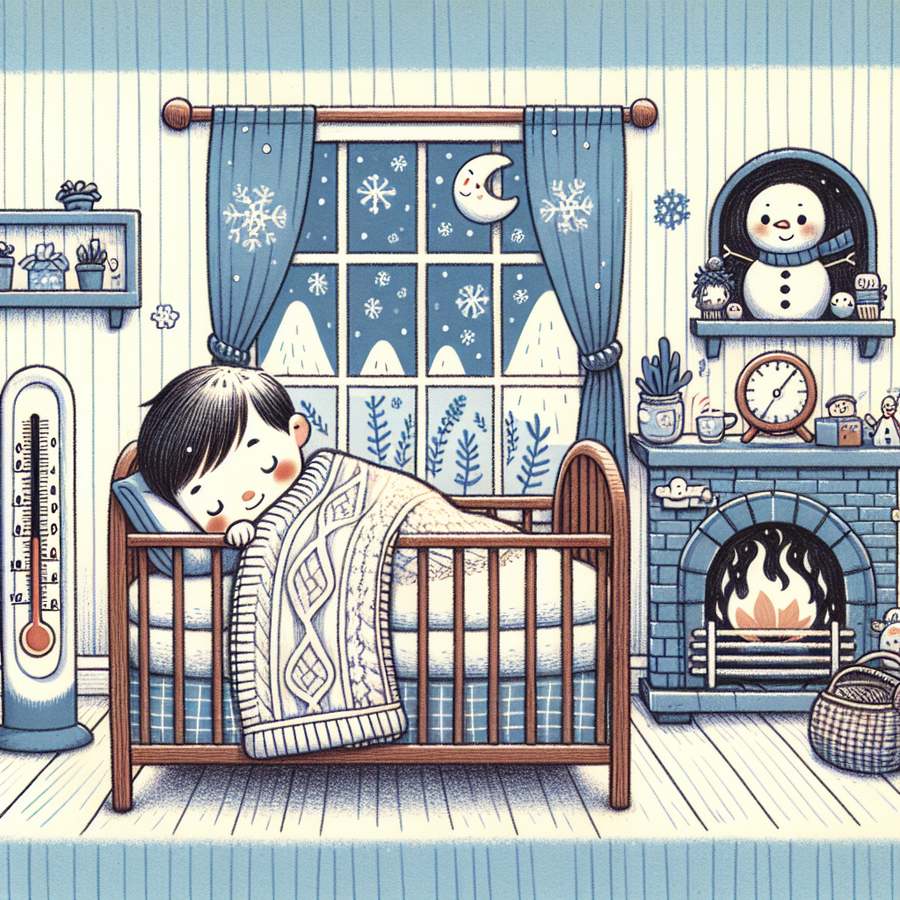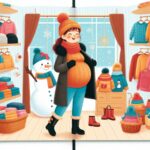Finding the ideal room temperature for baby sleep in winter is crucial for ensuring a comfortable and safe sleep environment for your little one. As temperatures drop outside, maintaining a cozy atmosphere becomes a top priority for parents and caregivers. Let’s dive deep into understanding the perfect temperature range and strategies to keep your baby snug and secure.
Understanding the Ideal Room Temperature for Baby Sleep in Winter
The ideal room temperature for baby sleep in winter is generally considered to be between 68°F and 72°F (20°C to 22°C). This range is widely recommended by pediatricians and sleep experts as it helps to prevent overheating and reduces the risk of SIDS (Sudden Infant Death Syndrome). A study by the American Academy of Pediatrics supports maintaining a comfortable and not too warm environment for infants during sleep.
Ensuring the room is at the ideal room temperature for baby sleep in winter is not only about adjusting the thermostat. It involves monitoring the temperature consistently, using a reliable room thermometer. Parents should also consider the baby’s sleepwear and the use of sleep sacks designed for winter to keep the baby warm without overheating. Choosing the right sleepwear for your baby’s comfort can significantly impact their sleep quality.
Creating a Comfortable Sleep Environment
Creating a sleep-friendly environment goes beyond setting the thermostat. It includes ensuring the nursery is free from drafts and using humidifiers to maintain optimal humidity levels. Dry air, common in winter due to heating, can irritate a baby’s sensitive skin and respiratory system. Incorporating a humidifier can also aid in creating a comfortable sleep atmosphere, as noted in optimizing the nursery for sound sleep.
In addition to temperature and humidity, the overall ambiance of the room plays a significant role. Utilizing soft, calming colors and incorporating white noise machines can enhance the sleep environment. A study comparing white noise machines vs lullabies for infant sleep highlighted the effectiveness of white noise in promoting better sleep patterns in infants.
Monitoring and Adjustments: Keeping the Ideal Room Temperature for Baby Sleep in Winter
Keeping a vigilant eye on the nursery’s temperature and making necessary adjustments is key to ensuring your baby remains comfortable throughout the night. A smart thermostat or a digital room thermometer can offer real-time insights and alerts if the room deviates from the ideal room temperature for baby sleep in winter. Regular checks during the night and early morning hours, when temperatures can significantly drop, are also advisable.
Addressing temperature fluctuations involves more than just heating. It’s important to avoid over-reliance on heating systems that can lead to excessively dry air or overheating. Layering your baby’s bedding, using thermal curtains to insulate windows, and choosing appropriate sleep attire can all contribute to maintaining the ideal room temperature for baby sleep in winter. For further reading on sleep attire suitable for winter, visit selecting the best sleeping bags for different seasons.
In conclusion, maintaining the ideal room temperature for baby sleep in winter is a multifaceted approach that requires attention to not just the temperature, but also the humidity, sleepwear, and overall sleep environment. By taking these factors into consideration and regularly monitoring the nursery conditions, parents can ensure their baby experiences a safe, comfortable, and restful sleep during the colder months.
For more resources on creating an ideal sleep environment for your baby, including tips on sleep schedules and soothing techniques, visit how to establish a sleep schedule for a newborn and techniques for soothing a baby to sleep through the night.













